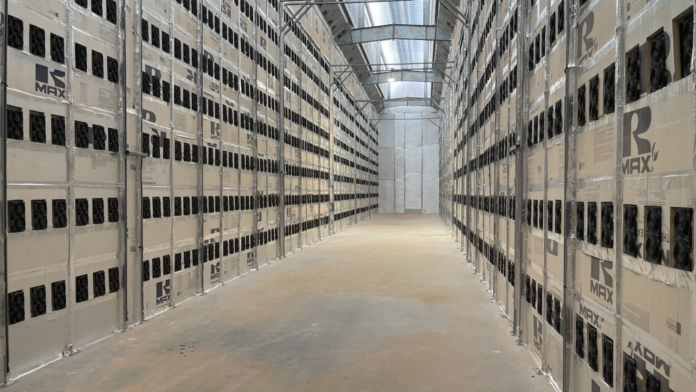Bitcoin’s mining difficulty rose to an all-time high last week for the second time in a month, which is great for the health of the network but has been putting pressure on crypto miners. It now requires 35.6 trillion hashes to mine one bitcoin. That’s about 13.55% higher than the previous difficulty adjustment two weeks ago and the highest adjustment in more than a year, CryptoQuant. The difficulty algorithm is programmed in the Bitcoin code to stabilize the network by ensuring each coin is mined at a steady pace of 10 minutes. If there’s too much competition, that means the blocks are coming in too fast and the difficulty needs to go up, D.A. Davidson’s Chris Brendler explained. By contrast, if there weren’t enough competition, that would mean the blocks were coming in too slowly, and the difficulty would need to come down. The network’s hashrate, a measure of computational power, tends to move in tandem with the difficulty, and has also been on a steady upward trend since the summer. “An increasing network hashrate is good for the health of the [Bitcoin] network,” Brendler told CNBC Pro. “We want the hashrate to be larger because it means there’s more and more energy being devoted to securing the network, making it broader and more decentralized. That is generally viewed as a positive for Bitcoin. It’s certainly not a positive for miners.” The problem for miners Miners have been feeling the heat since bitcoin fell below $20,000 and energy prices have increased. Last year, miners exited China after the government cracked down on bitcoin mining, resulting in a flood of activity shifting to the U.S., particularly Texas. But between the hot Texas summer and the falling price of bitcoin, many miners have been forced to stop. “This is a little bit of a conundrum right now because there’s no reason to mine if it’s not profitable because energy costs are higher,” Brendler said. “So as the economics get squeezed, you should see competition fall and it’s been rising.” He cited cooling autumn weather, new deliveries and installations for the rising competition as smaller operations that have been shut out start to come back online. “If they can make it through to the other side, there’ll be less competition left and the ones that survive will do extremely well in the stock prices,” Brendler said. Some companies have been forced to raise dilutive capital in recent days, he added. Not only do they need to cover the cost of power, they need to make a spread to cover operating expenses. Bitcoin’s static price It’s possible another miner capitulation event, where miners sell their bitcoin earnings to keep their own operations going , could be on the horizon. Oppenheimer’s Owen Lau acknowledged that while a growing hashrate is good for the network, margin compression is a worrying issue. It’s possible another miner capitulation event, where miners sell their bitcoin earnings in order to keep their own operations afloat, could be on the horizon, he said. In previous years, there’s been a positive correlation between the bitcoin price and the Bitcoin hashrate, but in this new macro-led market, investors shouldn’t place too much faith in that, Lau said. CryptoQuant’s Julio Moreno was more optimistic, but did not push the narrative that an increasing hashrate signals a bear market bottom in price. “The hashrate typically increases in bear markets. This was the case in 2013-2015, 2018-2019 and in the current bear market 2021-2022,” CryptoQuant’s Julio Moreno told CNBC. “Although prices do not necessarily have to increase given higher hashrate, we would expect prices to recover at some point to fairly compensate miners for their investment and expenses.”
Bitcoin mining difficulty hit an all-time high even with depressed prices
RELATED ARTICLES


